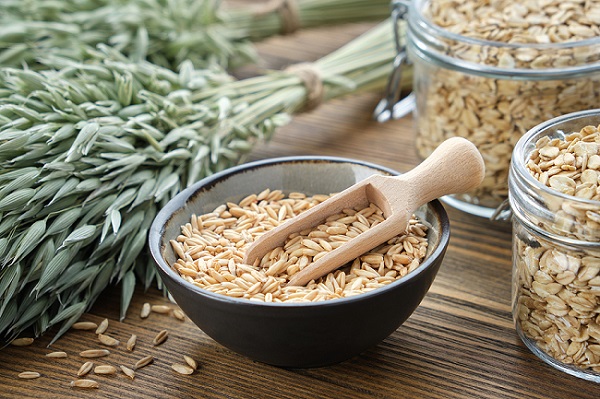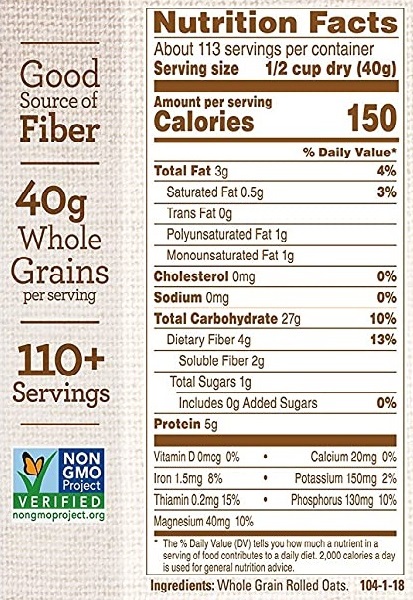- Home
- Food Questions
- Oats
Are
Oats Ok on The Candida Diet?
Posted 11/02/2021
Written by Dan Jackowiak Nc, HHP
Oats are considered to be annual grasses, and is a source of nutrition for both animals and humans. It is a common grain crop grown worldwide.
Modern oats originated from Asian wild red oats. Archaeological studies indicated that they have been around since 2000 BC but at that time they were considered simple weed seeds. Before the birth of Christ, they were grown and cultivated in the Europe and the Asian regions. In ancient times, oats were used for the treatment of diseases or for medicinal purposes, but later on, people started using them as a source of food.

Oats have a bland taste and have a tendency to spoil quickly; and that’s why Romans and Greeks considered them as diseased wheat. Many people believed that oats were more useful for animals. Despite these issues, oats become a staple food in Ireland, Germany, and Scotland.
Oats were introduced in North America by Scottish settlers in 1602. After this, oats didn't become a major food crop in North America until 1920. With emerging technology, oats become a major food crop in the mid-1980s and become a healthy source of nutrition among people worldwide. (Source)
Nutrient Profile of Oats
Oats are a rich source of proteins, carbs, fats, and vitamins, and their complete nutrition profile is discussed below:
1. Proteins:
Oats are rich in proteins and consists of 11-17% of proteins by dry weight. The major protein that is present in the oats is avenalin which is about 80% of the total protein content. Avenalin protein is somewhat similar to legume proteins. Oats also consist of a minor protein named “avenin”. (Source)
2. Carbohydrates:
Carbohydrates are also important macronutrients present in oats. 66% of the dry weight of oats are carbohydrates. Carbs in oats also contain fiber which is 11% of total weight, and 85% is rich in starch. Oats are low in sugar content and contain only 1% sugar derived from sucrose.
Starch:
Starch is a polysaccharide composed of long chains of sugar (glucose) molecules. It is the major component of oats. There are three different types of starches present in oats. These starches have high viscosity and have an ability to bind with water molecules. They are as follows:
Rapidly digested starch: This type of starch is easily broken down and absorbed in the body. It consists of a total of 7% of dry weight.
Slowly digested starch: this type of starch slowly breaks down and is absorbed in the body. It consists of a total of 22% of dry weight.
Resistant starch: This type of starch makes up 25% of the total content and includes fibers. Fibers improve the GIT by feeding the gut microbiota.
Fiber:
The majority of the fibers present in oats are soluble and consist of beta-glucan. Soluble oats consist of beta-glucans and form a gel-like solution at a low concentration. These beta-glucans help lower high cholesterol levels and efficiently increases the bile acid production in the body. These also help in the reduction of high blood sugar and insulin levels after a sugar-rich meal.
Studies show that beta-glucans help decrease the level of LDL cholesterol and reduces the risk of cardiac disease.
Oats also have insoluble fibers including cellulose, lignin, and hemicellulose.
Oats are helpful in appetite suppression and give the feeling of fullness.
3. Fats:
Fats present in oats are mostly omega-3 fatty acids and omega-6 fatty acids. It also consists of monounsaturated, saturated, and polyunsaturated fatty acids. The main fatty acids present in the oats are palmitic acid, linoleic acid, and oleic acid. It consists of 90-95% of all fatty acids.
4. Vitamins and Minerals:
Oats are a rich source of vitamins and minerals such as:
Phosphorus: It is responsible for tissue maintenance and bone health.
Manganese: It is responsible for growth, development, and metabolic reactions.
Copper: Copper is an essential element for maintaining heart health.
Iron: Iron is the main central element of hemoglobin, this protein is helpful in transporting oxygen.
Selenium: It is essential for better immune function.
Zinc: It is responsible for wound healing, enhanced immunity, and improved metabolic function.
Vitamin B1: Also known as thiamine, is helpful in the heart, muscle, and nerve functioning. It is also responsible for efficient glucose metabolism.
5. Antioxidants:
Three main antioxidants are present in oats:
Avenathramides: These compounds belong to a family of powerful antioxidants. These antioxidants reduce inflammation in the arteries and regulate blood pressure.
Ferulic acid: This antioxidant is responsible for better skin integrity. It reduces wrinkles and fine lines and spots.
Phytic acid: This antioxidant is responsible for the absorption of minerals such as zinc and iron.
Health Benefits of Oats
Previous studies suggest that oats are responsible for lowering LDL cholesterol and improving heart function. It improves glucose metabolism and insulin sensitivity and prevents type-2 diabetes.
Oats give the feeling of fullness and help reduce the appetite. Most oats are gluten-free and rich in fibers. Most people with celiac disease can tolerate oats. Using oats reduces the need for laxatives. Feeding oats to children under six years of age helps in increasing immunity and prevents childhood asthma. (Source)
Potential Bad Effects of Oats
Studies reported that avenin present in oats may cause problems for people with celiac disease because its amino acid structure is very similar to gluten. This also could present a problem for people that are intolerant to gluten. In either case, if you have celiac disease or are gluten intolerant, you must be eating certified gluten free oats. (Source)
Oats and The Candida Diet
Overall, oats are a good food to eat but the presence of avenin could be problematic for some people. I have worked with a few mothers that suggested this was the case with their children. They commented that once they removed oats from their kids diets, in a short time they became like a different child. Happy, vibrant and full of life!
The following nutrition information is provided by the USDA for 1/2 cup dry (39g) rolled oats with no sugar or salt added.
- Calories: 140
- Fat: 2.5g
- Sodium: 0mg
- Carbohydrates: 28g
- Fiber: 4g
- Sugars: 0g
- Protein: 5g

The picture on the right is from a container of Quaker Old Fashioned oatmeal. The carb amount is very close at 27g per ½ cup serving. Most of these carbs do come from complex or resistant starches which is slowly digested and should prevent a blood sugar spike. The 4g of fiber reduces the 28g to 24g net carbs which is not too bad.
Usually we suggest only eating 20g of carbs per meal and the rest proteins, vegetables and fats. If you eat three meals a day you should be able to hit 50 to 60 grams of carbs per day, which will keep your red and white blood cells functioning at their best.
Oats have a glycemic index of 55 which is on the high side of the generally recognized as low glycemic foods. For comparison, sugar itself ranks 65.
Typically though, oats are not one of our preferred grains so what we would do is not eat them for at least the first four weeks. Then you can try a half cup and see if they cause any kind of reaction, if they do, don't eat them.
Back to Candida Diet Questions
If you have any questions about oats on the candida diet or about yeast infections in general, please feel free to contact us from the contact page of this website or talk to your doctor.
Home Privacy Policy Copyright Policy Disclosure Policy Doctors Store
Copyright © 2003 - 2025. All Rights Reserved under USC Title 17. Do not copy
content from the pages of this website without our expressed written consent.
To do so is Plagiarism, Not Fair Use, is Illegal, and a violation of the
The Digital Millennium Copyright Act of 1998.